Fascin Activates β-Catenin Signaling and Promotes Breast Cancer Stem Cell Function Mainly Through Focal Adhesion Kinase (FAK): Relation With Disease Progression
- PMID: 32373510
- PMCID: PMC7186340
- DOI: 10.3389/fonc.2020.00440
Fascin Activates β-Catenin Signaling and Promotes Breast Cancer Stem Cell Function Mainly Through Focal Adhesion Kinase (FAK): Relation With Disease Progression
Abstract
Cancer stem cells (CSCs), a rare population of tumor cells with high self-renewability potential, have gained increasing attention due to their contribution to chemoresistance and metastasis. We have previously demonstrated a critical role for the actin-bundling protein (fascin) in mediating breast cancer chemoresistance through activation of focal adhesion kinase (FAK). The latter is known to trigger the β-catenin signaling pathway. Whether fascin activation of FAK would ultimately trigger β-catenin signaling pathway has not been elucidated. Here, we assessed the effect of fascin manipulation in breast cancer cells on triggering β-catenin downstream targets and its dependence on FAK. Gain and loss of fascin expression showed its direct effect on the constitutive expression of β-catenin downstream targets and enhancement of self-renewability. In addition, fascin was essential for glycogen synthase kinase 3β inhibitor-mediated inducible expression and function of the β-catenin downstream targets. Importantly, fascin-mediated constitutive and inducible expression of β-catenin downstream targets, as well as its subsequent effect on CSC function, was at least partially FAK dependent. To assess the clinical relevance of the in vitro findings, we evaluated the consequence of fascin, FAK, and β-catenin downstream target coexpression on the outcome of breast cancer patient survival. Patients with coexpression of fascinhigh and FAKhigh or high β-catenin downstream targets showed the worst survival outcome, whereas in fascinlow, patient coexpression of FAKhigh or high β-catenin targets had less significant effect on the survival. Altogether, our data demonstrated the critical role of fascin-mediated β-catenin activation and its dependence on intact FAK signaling to promote breast CSC function. These findings suggest that targeting of fascin-FAK-β-catenin axis may provide a novel therapeutic approach for eradication of breast cancer from the root.
Keywords: FAK; breast cancer; cancer stem cell; fascin; β-catenin.
Copyright © 2020 Barnawi, Al-Khaldi, Bakheet, Fallatah, Alaiya, Ghebeh and Al-Alwan.
Figures
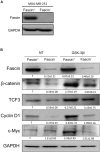
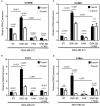
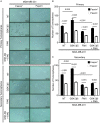
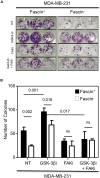
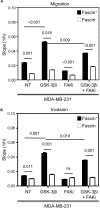


Similar articles
-
β1 Integrin is essential for fascin-mediated breast cancer stem cell function and disease progression.Int J Cancer. 2019 Aug 1;145(3):830-841. doi: 10.1002/ijc.32183. Epub 2019 Feb 18. Int J Cancer. 2019. PMID: 30719702 Free PMC article.
-
Fascin Is Critical for the Maintenance of Breast Cancer Stem Cell Pool Predominantly via the Activation of the Notch Self-Renewal Pathway.Stem Cells. 2016 Dec;34(12):2799-2813. doi: 10.1002/stem.2473. Epub 2016 Aug 21. Stem Cells. 2016. PMID: 27502039
-
Inhibition of FAK kinase activity preferentially targets cancer stem cells.Oncotarget. 2017 Jun 16;8(31):51733-51747. doi: 10.18632/oncotarget.18517. eCollection 2017 Aug 1. Oncotarget. 2017. PMID: 28881682 Free PMC article.
-
FAK and WNT signaling: the meeting of two pathways in cancer and development.Anticancer Agents Med Chem. 2011 Sep;11(7):600-6. doi: 10.2174/187152011796817673. Anticancer Agents Med Chem. 2011. PMID: 21707509 Review.
-
Focal Adhesion Kinase Fine Tunes Multifaced Signals toward Breast Cancer Progression.Cancers (Basel). 2021 Feb 5;13(4):645. doi: 10.3390/cancers13040645. Cancers (Basel). 2021. PMID: 33562737 Free PMC article. Review.
Cited by
-
Fascin-1: Updated biological functions and therapeutic implications in cancer biology.BBA Adv. 2022 May 17;2:100052. doi: 10.1016/j.bbadva.2022.100052. eCollection 2022. BBA Adv. 2022. PMID: 37082587 Free PMC article. Review.
-
Cytoskeletal and Cytoskeleton-Associated Proteins: Key Regulators of Cancer Stem Cell Properties.Pharmaceuticals (Basel). 2022 Nov 8;15(11):1369. doi: 10.3390/ph15111369. Pharmaceuticals (Basel). 2022. PMID: 36355541 Free PMC article. Review.
-
Docetaxel Resistance in Breast Cancer: Current Insights and Future Directions.Int J Mol Sci. 2025 Jul 23;26(15):7119. doi: 10.3390/ijms26157119. Int J Mol Sci. 2025. PMID: 40806254 Free PMC article. Review.
-
Fascin-1 and its role as a serological marker in prostate cancer: a prospective case-control study.Future Sci OA. 2021 Jun 30;7(9):FSO745. doi: 10.2144/fsoa-2021-0051. eCollection 2021 Oct. Future Sci OA. 2021. PMID: 34737886 Free PMC article.
-
Walking the tight wire between cell adhesion and WNT signalling: a balancing act for β-catenin.Open Biol. 2020 Dec;10(12):200267. doi: 10.1098/rsob.200267. Epub 2020 Dec 9. Open Biol. 2020. PMID: 33292105 Free PMC article. Review.
References
-
- Yoder BJ, Tso E, Skacel M, Pettay J, Tarr S, Budd T, et al. . The expression of fascin, an actin-bundling motility protein, correlates with hormone receptor-negative breast cancer and a more aggressive clinical course. Clin Cancer Res. (2005) 11:186–92. - PubMed
LinkOut - more resources
Full Text Sources
Miscellaneous

